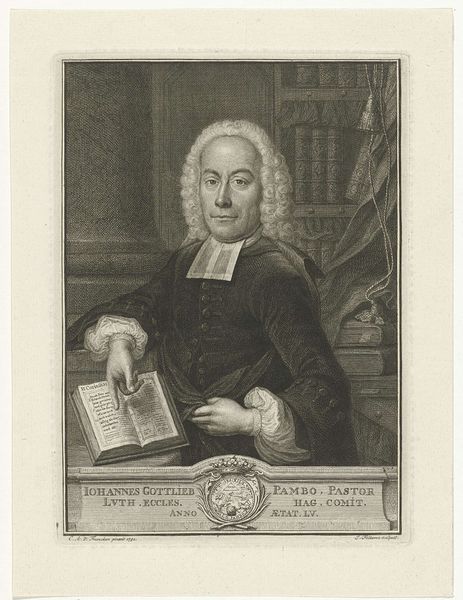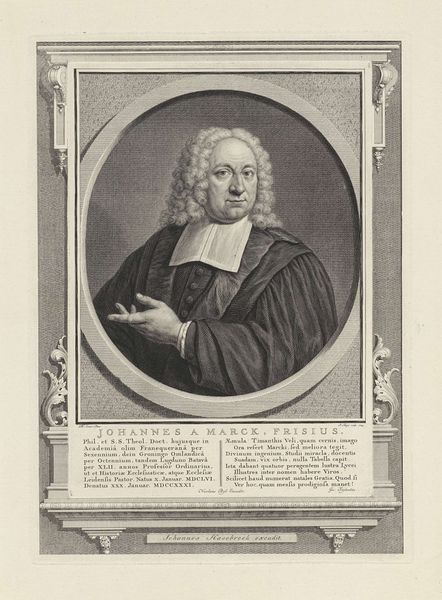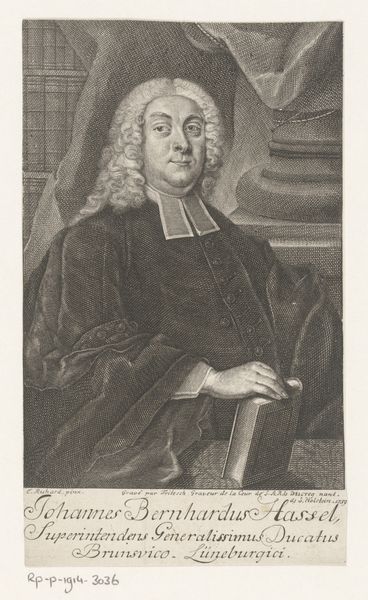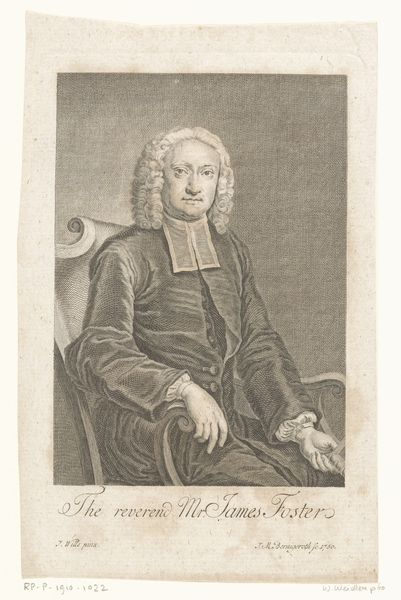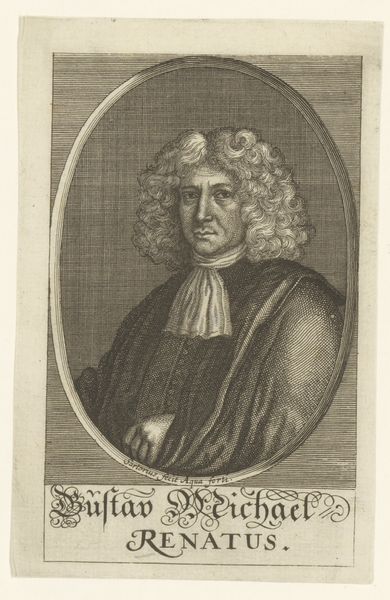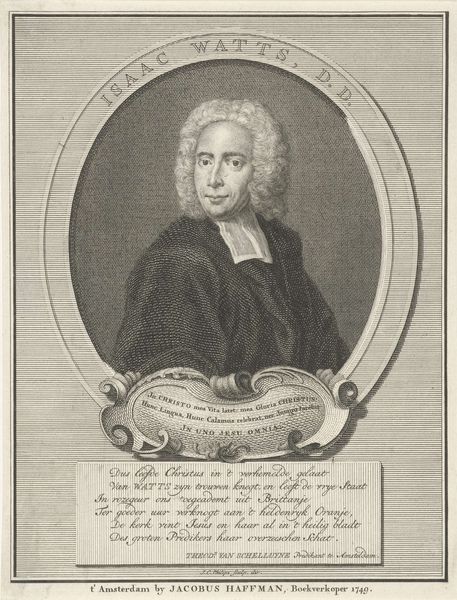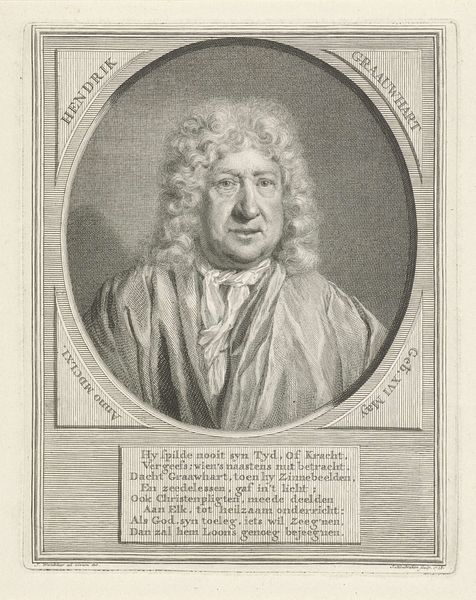
engraving
#
portrait
#
baroque
#
old engraving style
#
portrait reference
#
line
#
history-painting
#
engraving
Dimensions: height 219 mm, width 174 mm
Copyright: Rijks Museum: Open Domain
Curator: Editor: This is “Portret van Johannes Boskoop,” an engraving made in 1752 by Jacob Folkema. It strikes me as incredibly detailed, almost photographic in its precision despite being made through such a laborious process. What can you tell me about it? Curator: Considering Folkema’s engraving, it's impossible to ignore the labour and the materials involved. The copperplate, the inks, the paper - each element represents a different stage of production and a different set of social relations. Engravings like these were commodities, produced for a market hungry for images. Editor: A commodity…So this wasn’t just about artistic expression? Curator: Not primarily. While skill is evident, the print served to circulate images of prominent individuals like Johannes Boskoop. Ask yourself, what does the clothing worn by the person depicted convey? Editor: Status, certainly. And the wig! It’s about portraying him as part of a particular class, a specific system. The print makes it reproducible and available to others in society. Curator: Exactly! So the “art” becomes inextricably linked to consumption, to its role in defining social strata. And even the artist becomes a kind of craftsman participating in the material conditions of his time. The art becomes available to those that buy it and becomes propaganda of status in a way. Editor: That definitely changes how I see the portrait. It's not just about capturing a likeness but about making and circulating a particular kind of social statement, I see it as much more than a Baroque portrait now! Curator: And understanding its materiality helps reveal those hidden layers. There are stories buried within it.
Comments
No comments
Be the first to comment and join the conversation on the ultimate creative platform.
